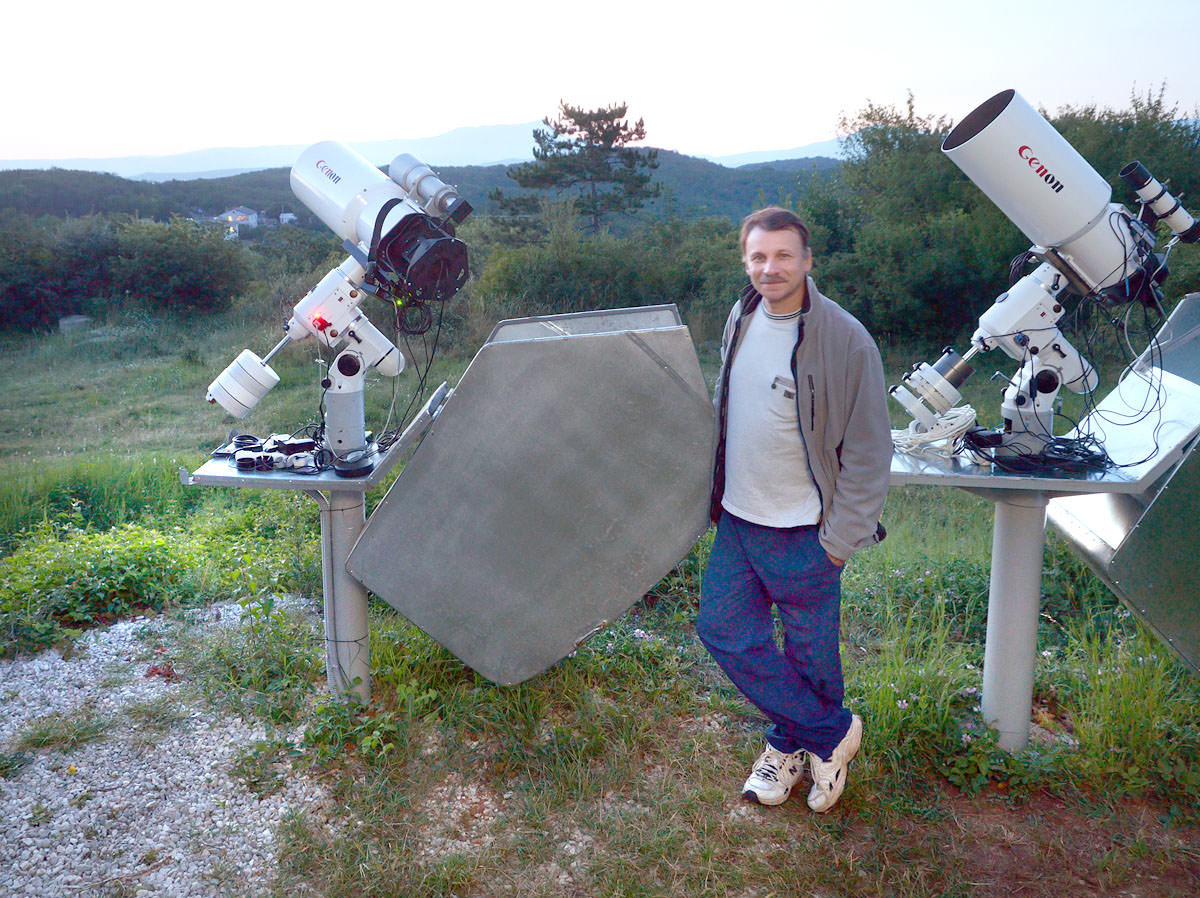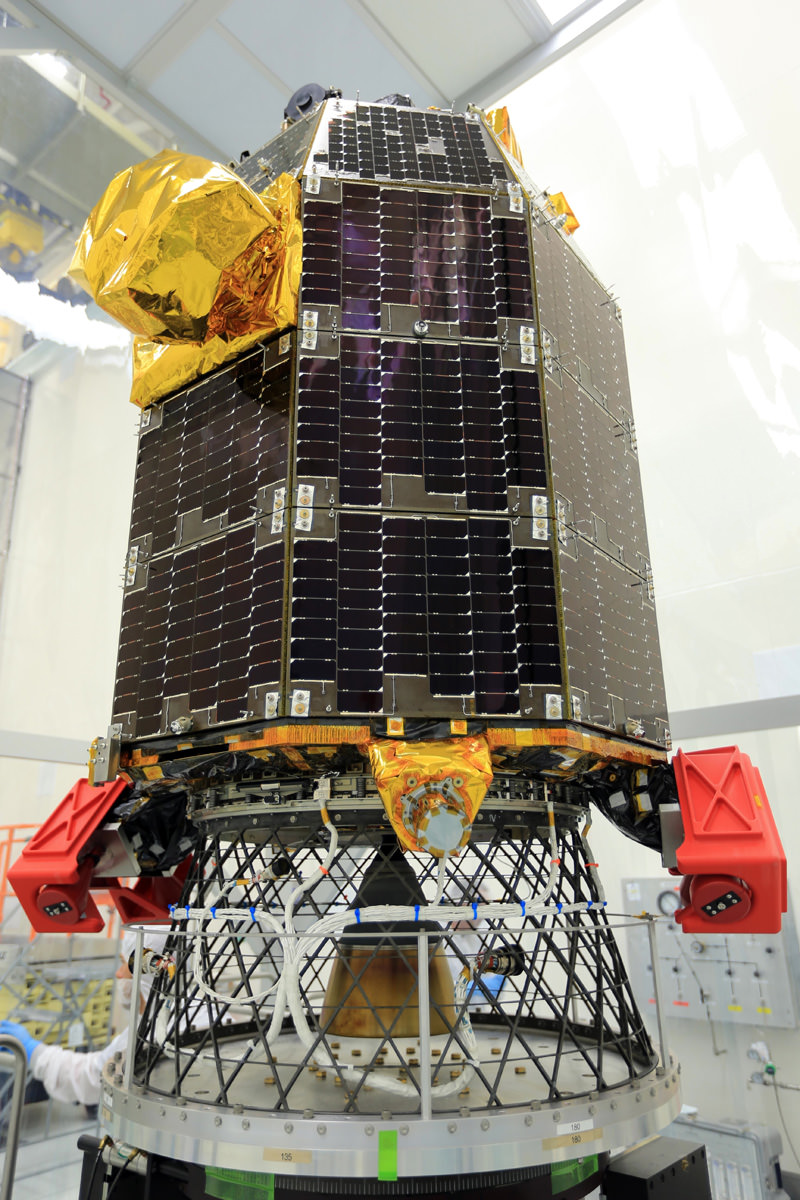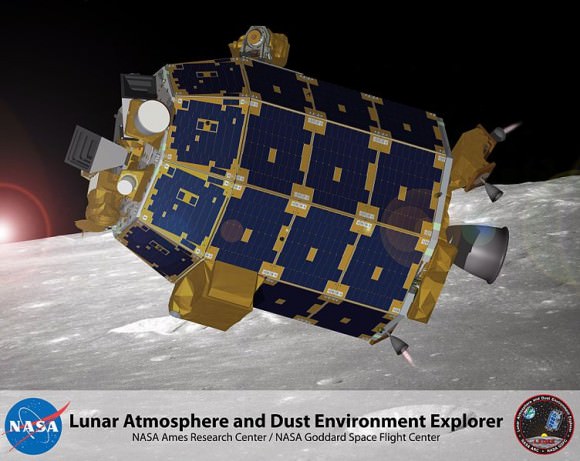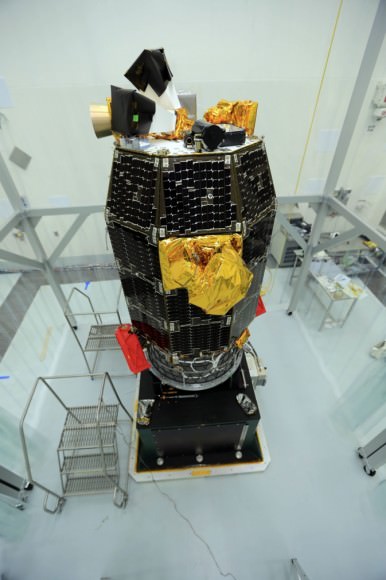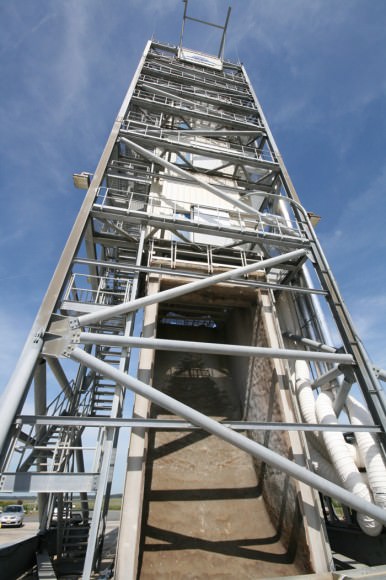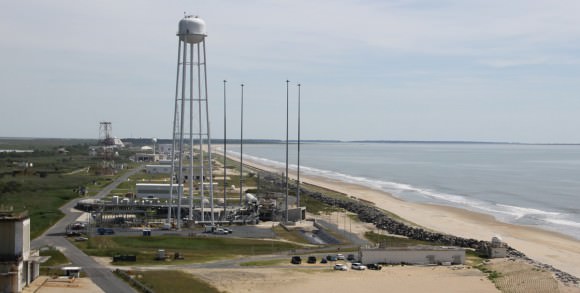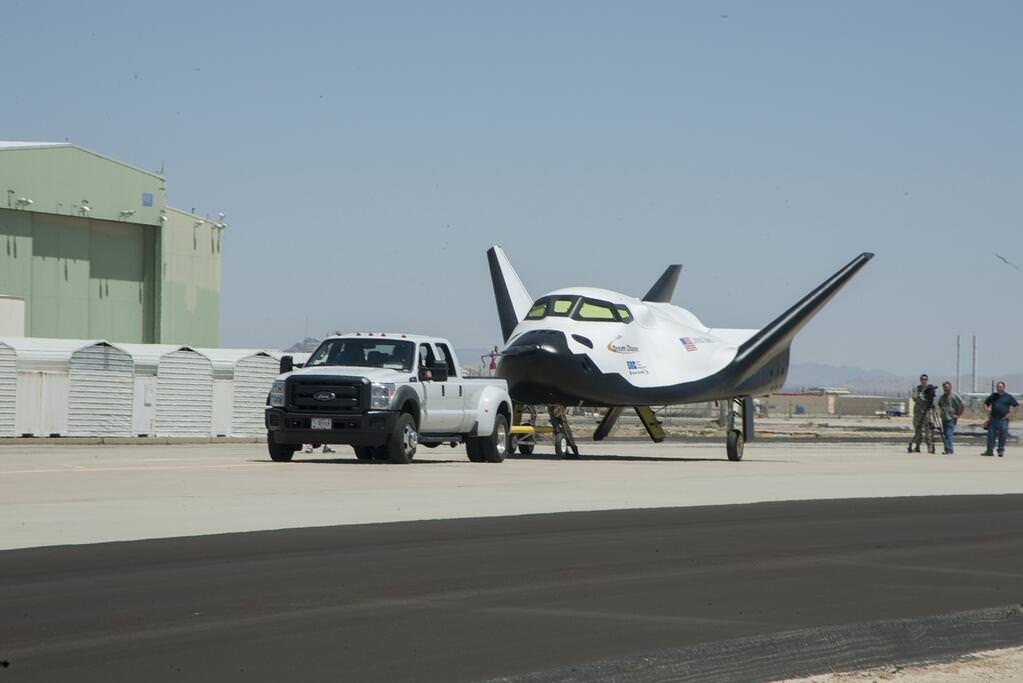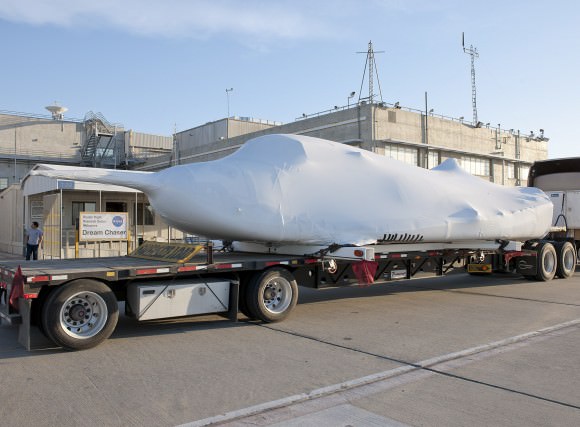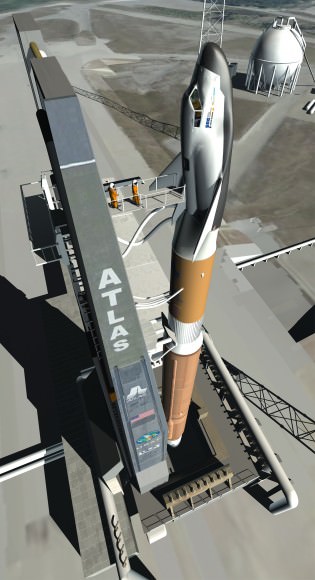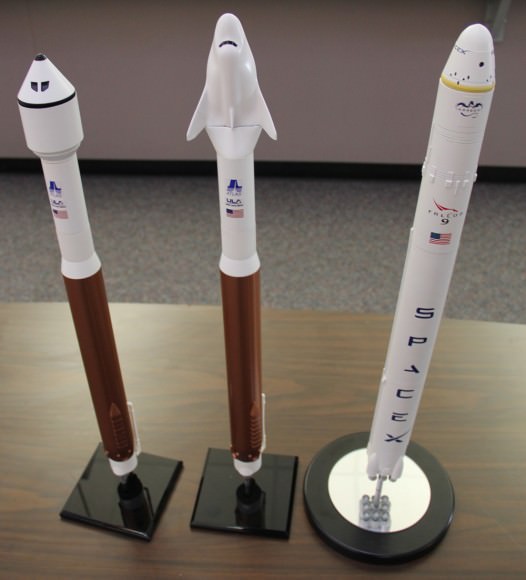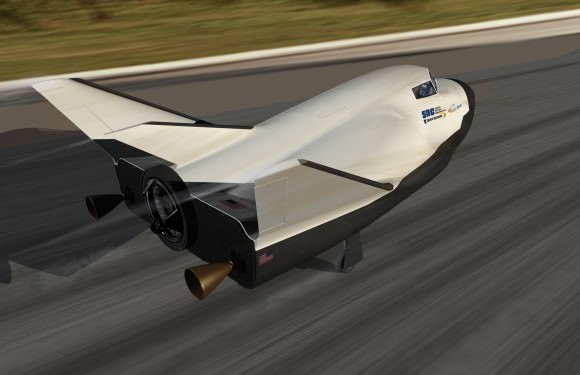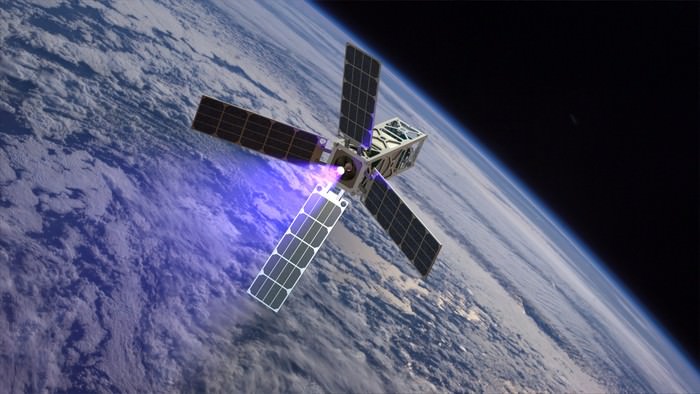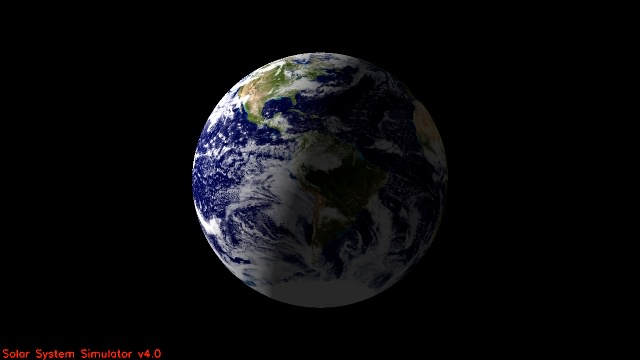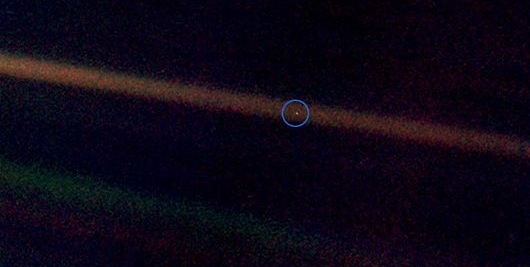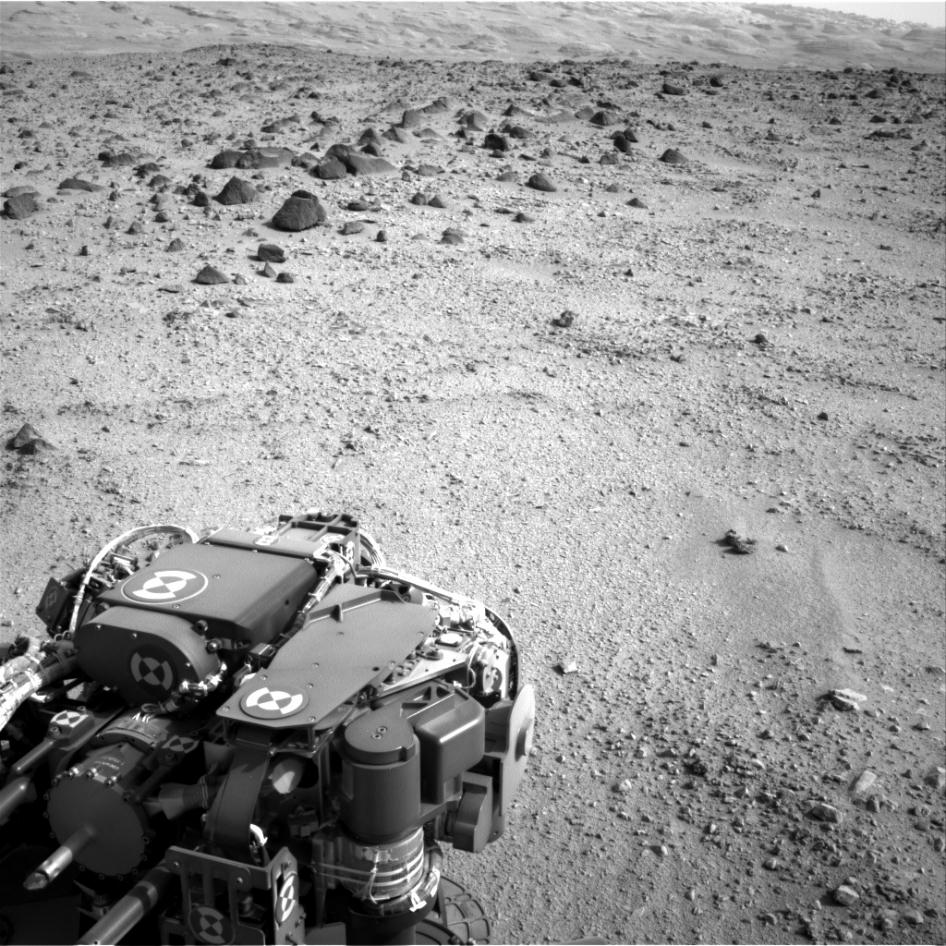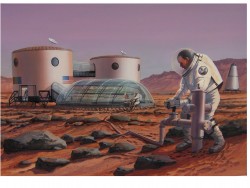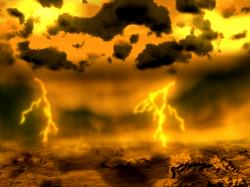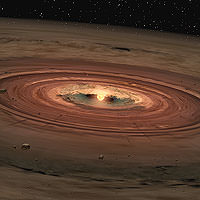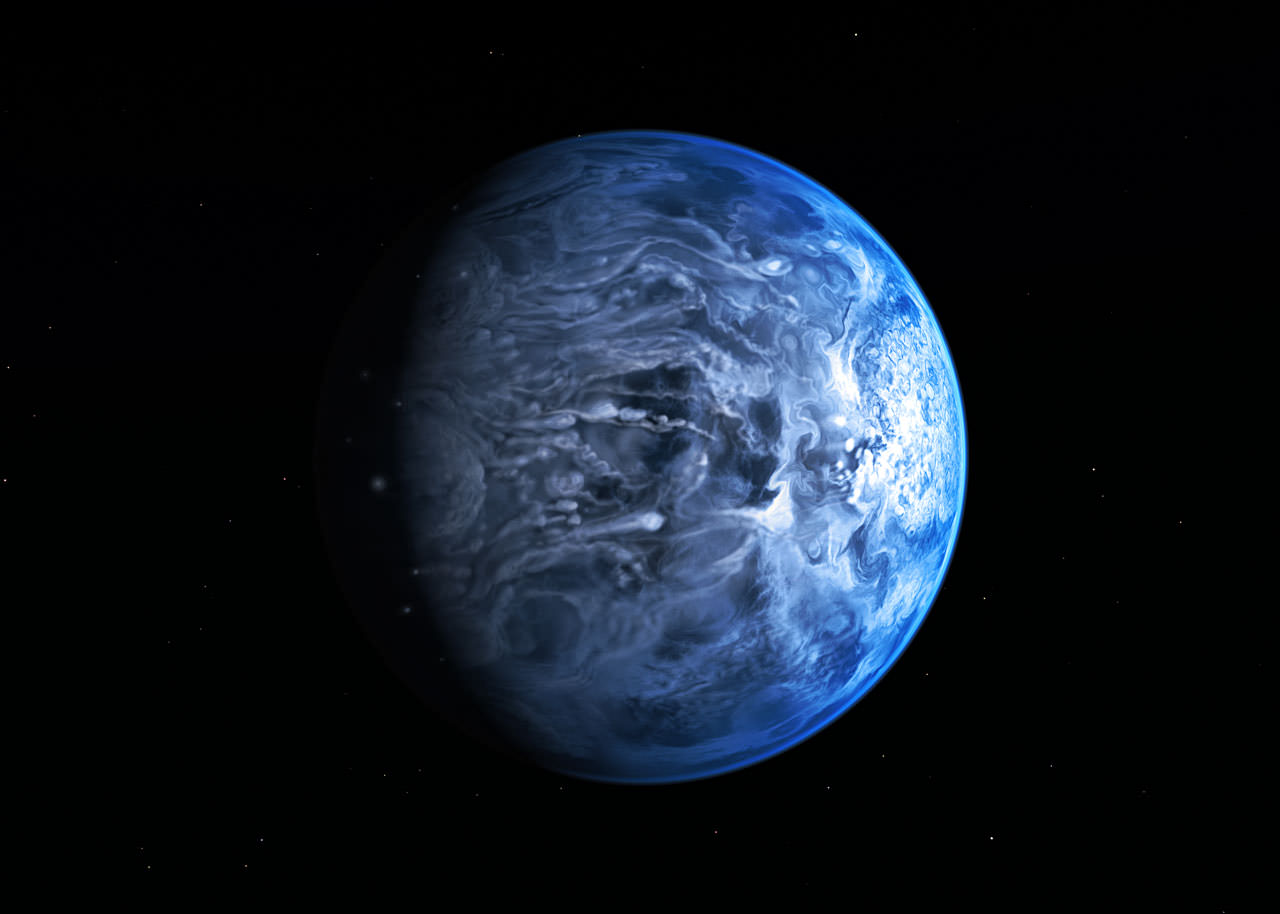Ukrainian amateur astronomer Gennady Borisov discovered a brand new comet on July 8 near the bright star Capella in the constellation Auriga. The comet was confirmed and officially christened C/2013 N4 (Borisov) on July 13. At the time of discovery, Borisov was attending the Russian-Ukrainian “Southern Night” star party in Crimea, Ukraine. He nabbed the comet – his first – using an 8-inch (20-cm) f/1.5 wide field telescope of his own design equipped with a CCD camera.
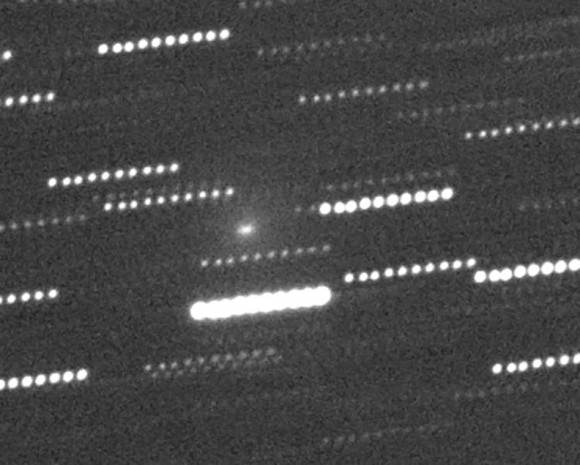
The new comet is on the faint side, appearing as a small, fuzzy patch of 13th magnitude with a brighter center. To see it you’ll need at least a 10-inch (25-cm) telescope and the fortitude to rise in the wee hours before dawn. The reason for the early hour is Borisov’s location in Auriga, a constellation that doesn’t clear the horizon until shortly before the start of morning twilight. Faintness and low altitude will combine to make Comet Borisov an enticing if challenging object for amateur astronomers.
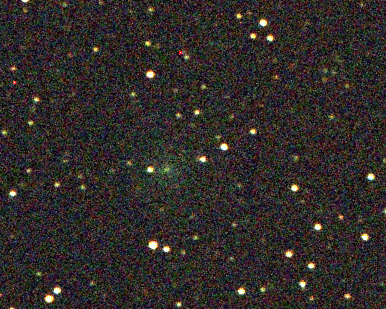
C/2013 N4 is currently traveling through Auriga not far from the easy-to-spot naked eye star Beta and will slowly brighten as it approaches perihelion – closest point to the sun – on August 20 at a distance of 113.5 million miles (182.7 million km). Unfortunately its elongation or separation from the sun will be slowly shrinking in the coming weeks, causing the comet to drop lower in the sky as it approaches perihelion. Our fuzzy visitor misses Earth by a comfortable 192.5 million miles (310 million km) on August 11. It’s likely Comet Borisov won’t get much brighter than 12th magnitude. Astronomers are still working out the details of its orbit, so it’s possible brightness predictions could change in the near future.
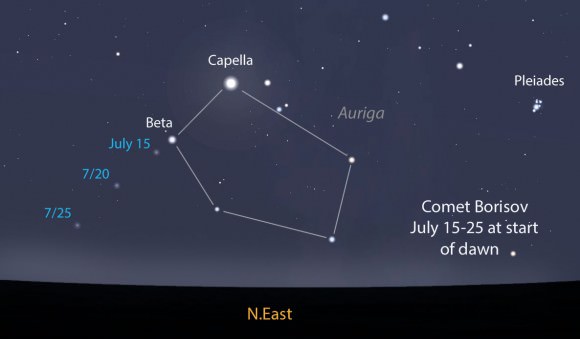
Aside from how prominent or not Gennady’s comet will become, the most amazing thing is that he beat the automated surveys to the punch. These days nearly all comets and many asteroids are found by professional astronomers using robotic telescopes hooked up to sensitive cameras and computers. Large areas of the sky are covered each clear night. If a fuzzy, moving object is detected by the computer, astronomers are alerted, follow-up observations are made and the new object receives a letter, number and the survey’s name. That’s why there are a plethora of comets in the past 15 years with names like LINEAR (Lincoln Near-Earth Asteroid Survey), Pan-STARRS (Panoramic Survey Telescope & Rapid Response System), LONEOS (Lowell Observatory Near-Earth-Object Search) and others.
By dint of persistence, a smart plan and a keen eye, Gennady Borisov has made his mark in the sky. For that he deserves a well-deserved congratulations and round of applause!
Amateurs who wish to plot the comet on a star map using a star charting software program can get Comet Borisov’s orbital elements HERE. To follow the latest developments, check out Leonid Elenin’s blog. You might recall it was Elenin in 2010 who discovered famed comet C/2010 X1 (Elenin), blamed for everything from earthquakes to future world catastrophes. Instead, the comet proved so friable, it disintegrated as it approached the sun. Let’s see how Comet Borisov fares.

